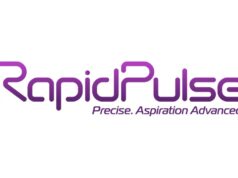
The European Stroke Organisation (ESO), together with the European Society of Minimally Invasive Neurological Therapy (ESMINT) and the European Society of Neuroradiology (ESNR), endorsed the 4th annual Stroke Winter Course for young stroke physicians and neuroradiologists on the topic of acute interdisciplinary stroke treatment.
The primary goal of the ESO- ESMINT-ESNR endorsed winter school on acute interdisciplinary stroke treatment is to join European young stroke physicians and young neuroradiologists in order to enhance interdisciplinary management of patients with acute ischaemic stroke. A series of concentrated high quality teaching sessions and courses on acute stroke management were offered at a low price.
The secondary goal of the winter school is to perform “hands-on” courses for interventional neuroradiologists and special teaching sessions for stroke physicians. The winter school offers a unique method of teaching combining plenum sessions, discussions and technical training; it hopes to foster improvement in treatment of cerebrovascular disease and advance research in this complex field, leading to technical developments.
The latest Stroke Winter School took place in Bern, Switzerland from 31 January–3 February at the University Hospital (Inselspital) Bern. The organisers were faced with the difficult task to select 57 participants from more than 100 applications and welcomed participants from 18 different countries. This year`s participants travelled from: Austria, Belgium, Bulgaria, Colombia, Croatia, Finland, France, Germany, Greece, Italy, Lithuanian, Norway, Portugal, Sweden, Switzerland, Turkey, Ukraine, and United Kingdom. Furthermore the committee are very happy to welcome 29 eminent speakers from various countries in Europe.
ESO ESMINT ESNR Stroke Winter School covered a wide range of exciting topics ranging from stroke epidemiology to advanced neuroimaging, from randomised evidence to day-to-day clinical decision.
 At the end of the second day, Linxin Li from Oxford, reflected, “It is fascinating to have the hands on practice of imaging processing and simulation. Even more importantly, the shared experience and heated discussion between stroke physicians and neuroradiologists, and between different centres offer us a great opportunity to reflect on how best to improve our own practices.”
At the end of the second day, Linxin Li from Oxford, reflected, “It is fascinating to have the hands on practice of imaging processing and simulation. Even more importantly, the shared experience and heated discussion between stroke physicians and neuroradiologists, and between different centres offer us a great opportunity to reflect on how best to improve our own practices.”
Report of the fourth ESO ESMINT ESNR Stroke Winter School
According to a report authored by the organising committee of Urs Fischer, Pasquale Mordasini and Jan Gralla, the 29 speakers (15 from EU, 14 from Switzerland) including neurologists, interventional and non-interventional neuroradiologists, neurosurgeons, internal medicine specialists, and rehabilitation specialists led challenging discussions. The teaching programme included 30 lectures and eight tutorials. The main focus of the lectures was interdisciplinary treatment of acute stroke.
There were sessions on acute stroke imaging, acute treatment strategies including endovascular approaches, stroke treatment in difficult circumstances and needs to set up an interdisciplinary stroke centre. In the afternoon, tutorials were given separately for neuroradiologists and neurologists. Neuroradiologists had the opportunity for structured hands-on teaching in small groups on endovascular procedures with animal models and management of complications of endovascular treatment. Neurologists could learn neuroangiography on a model and were taught CT and MRI interpretations by neuroradiologists. Both groups visited the stroke unit and had interdisciplinary case discussion.

The organising committee reported that a special highlight for the interventional neuroradiologists was the hands-on teaching sessions with the animal model. Small groups of four to five participants were given the opportunity to perform diagnostic angiography and endovascular treatment procedures such as thrombectomy with multiple devices.
Additionally during the Stroke Winter School, a faculty meeting was held with members of the ESO, ESMINT and ESNR in order to discuss future common strategies to enhance the quality of stroke management. Topics were the foundation of a European Stroke Network, guidelines, joint conferences and workshops.
There will be a 5th ESO ESMINT ESNR Stroke Winter School end of January 2018 in Bern.













